THE DAY COMMODUS KILLED A RHINO
WITNESS TO ANCIENT HISTORY
GREGORY S. ALDRETE, Series Editor
THE DAY COMMODUS KILLED A RHINO

Understanding the Roman Games
Jerry Toner

2014 Johns Hopkins University Press
All rights reserved. Published 2014
Printed in the United States of America on acid-free paper
2 4 6 8 9 7 5 3 1
Johns Hopkins University Press
2715 North Charles Street
Baltimore, Maryland 21218-4363
www.press.jhu.edu
Library of Congress Cataloging-in-Publication Data
Toner, J. P.
The day Commodus killed a rhino : understanding the
Roman games / Jerry Toner.
pages cm
Includes bibliographical references and index.
ISBN 978-1-4214-1585-7 (hardback : acid-free paper)
ISBN 978-1-4214-1586-4 (paperback : acid-free paper)
ISBN 978-1-4214-1587-1 (electronic) 1. GamesRomeHistory.
2. GamesSocial aspectsRomeHistory. 3. GamesPolitical
aspectsRomeHistory. 4. ViolenceSocial aspectsRome
History. 5. Commodus, Emperor of Rome, 161192.
6. EmperorsRomeHistory. 7. GladiatorsRomeHistory.
8. RomeSocial life and customs. 9. RomePolitics and
government. 10. National characteristics, Roman. I. Title.
GV31.T77 2014
796.0937dc23 2014012493
A catalog record for this book is available from the British Library.
All figures are from Wikimedia.
Special discounts are available for bulk purchases of this book.
For more information, please contact Special Sales at 410-516-6936
or .
Johns Hopkins University Press uses environmentally friendly book
materials, including recycled text paper that is composed of at least
30 percent post-consumer waste, whenever possible.
CONTENTS
PROLOGUE
The Rhino Dies
I
Commoduss Great Games
II
When in Commodiana
III
An Emperor Loves His People
IV
Feeding the Monster
V
Win the Crowd
VI
How to Be a Roman
EPILOGUE
Fighting Back
THE DAY COMMODUS KILLED A RHINO
PROLOGUE
The Rhino Dies
 THE EMPEROR COMMODUS wanted to kill a rhinoceros. And he wanted to do it in the Colosseum. His passion for hunting animals was so great that he wanted to shoot a tiger, an elephant, and a hippopotamus as well. So, at the end of AD 192, he put on fourteen days of the most lavish and spectacular games Rome had ever seen. And the emperor himself was to be the star attraction. When news of this became known, people rushed from all over Italy to see what they had never seen or even heard of before: an emperor in the arena. It was said that the emperors prowess was so great that he never missed when hurling his javelins or firing off arrows from his bow.
THE EMPEROR COMMODUS wanted to kill a rhinoceros. And he wanted to do it in the Colosseum. His passion for hunting animals was so great that he wanted to shoot a tiger, an elephant, and a hippopotamus as well. So, at the end of AD 192, he put on fourteen days of the most lavish and spectacular games Rome had ever seen. And the emperor himself was to be the star attraction. When news of this became known, people rushed from all over Italy to see what they had never seen or even heard of before: an emperor in the arena. It was said that the emperors prowess was so great that he never missed when hurling his javelins or firing off arrows from his bow.
Dressed in a long-sleeved white tunic, made of silk interwoven with gold, Commodus began the games by taking the formal greetings of Romes senators, who were too terrified of him not to attend. Commodus then changed into a robe of pure purple with gold spangled stars, topped with a matching purple cloak. On his head sat a golden crown encrusted with gems from India. In his hand, he held a staff like that of the gods messenger, Mercury. Recently, the emperor had taken to dressing as Hercules, the man whose heroic actions had seen him turned into a god. So Commodus used to wear a lionskin shawl and carried a club as Hercules had, and countless statues of the emperor in this herculean style were set up throughout Rome. But before he entered the oval arena of the great Colosseum, which the emperors Vespasian and Titus had built more than a century before, the emperor set aside the trappings of Hercules. They were placed on a gilded chair, and he stepped out before the huge crowd of fifty thousand spectators dressed as Mercury, before throwing off all his clothes except for a tunic.
Except he did not simply step out onto the sand as a normal hunter would. A high catwalk had been built, crossing over the entire length of the arena, and it was along this that Commodus strutted before his captivated public. But this was more of a turkey shoot than a hunt. The supporting walls for this structure divided the animals beneath into small herds and, from his vantage point, the emperor could easily pick them off with his bow and his spears. On the first day he warmed up by personally killing a hundred bears. The crowd cheered and applauded each missile as it struck home. It was hot work. Halfway through the emperor grew weary, and taking a cup in the shape of a herculean club, he downed the cold sweet wine it contained in one gulp. Cheers! shouted everyone in the crowd.
On later days he continued the carnage. Animals were led up to him or placed before him in nets so that he could shoot them from point-blank range. He even brought down a gentle giraffe with his cruel spears. But the rhino was more problematic. The presence of a rhinoceros was a sure sign of the greatness of the games. Simply getting the animal to Rome had taken a significant logistical effort. They were difficult beasts to control. The emperor Titus had brought one for his games celebrating the opening of the Colosseum in AD 80. Initially the strange animal was just displayed to the crowd, who stared in wonder at its thick hide and twin horns. But when it came to making the beast fight, the rhino was not playing ball. The keepers tried desperately to goad it into getting angry, cracking whips about it, terrified about what would happen to them if the animal failed to perform. At last, the rhino lowered his head and flamed into a terrible rage. It charged out into the arena and tossed a great bull into the air as if it were a dummy. The crowd, which minutes before had been complaining that nothing was happening, gasped in awe.
This had not been the first appearance of a rhino in Rome. Julius Caesars great adversary, Pompey the Great, had first imported one for his games in 55 BC, although it is unclear whether the rhino in question was a two-horned African rhino or a single-horned Indian one. Both types were sourced by the Romans, with the famous mosaic from Piazza Armerina in Sicily showing an Indian specimen. Nor was Commoduss rhino, whichever type it was, the first in Romes history to be actually killed for the entertainment of the crowd. The emperor Augustus had one hunted as part of his games in 29 BC to celebrate the opening of his temple to Julius Caesar, his adoptive, dead, and deified father. Roman leaders seem to have had a thing about killing rare breeds. With skin up almost two inches thick in places, a rhino is not an animal that is easy to kill even with a modern rifle. We can only imagine at how many arrows and spears, or how much assistance from others, it took before Commodus finally managed to fell the poor beast.

Mosaic showing the capture of a rhino
We have an eyewitness account to thank for all these vivid details. Dio Cassius was a senator, as his father had been before him, and he like his peers was forced to attend, salute, and cheer the emperor. Twenty years later when Commodus was long since dead, Dio wrote an eighty-volume history of Rome covering a period of almost 1,500 years. His section on Commoduss reign is full of accounts of the emperors strange antics. His contempt for him is obvious. He had seen all the emperors foibles close up.
Next page
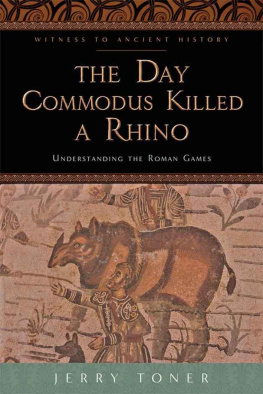

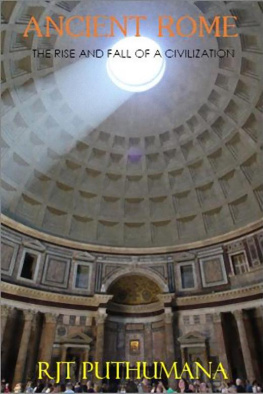


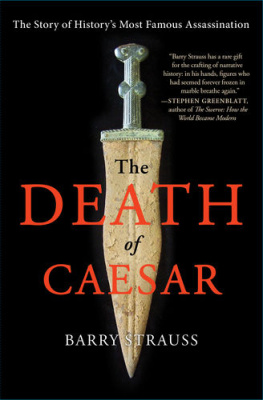
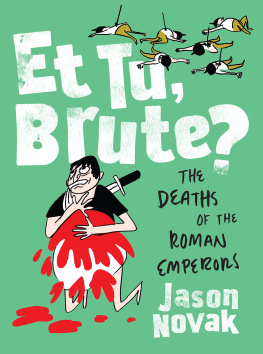
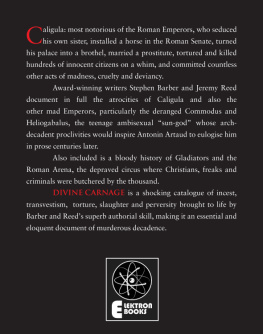
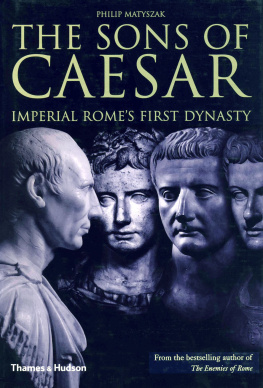
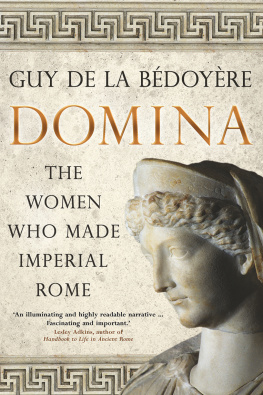
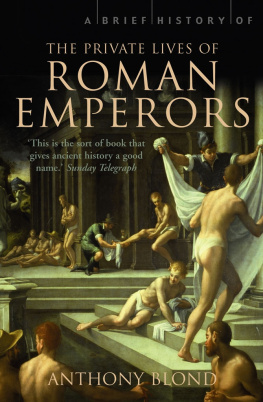


 THE EMPEROR COMMODUS wanted to kill a rhinoceros. And he wanted to do it in the Colosseum. His passion for hunting animals was so great that he wanted to shoot a tiger, an elephant, and a hippopotamus as well. So, at the end of AD 192, he put on fourteen days of the most lavish and spectacular games Rome had ever seen. And the emperor himself was to be the star attraction. When news of this became known, people rushed from all over Italy to see what they had never seen or even heard of before: an emperor in the arena. It was said that the emperors prowess was so great that he never missed when hurling his javelins or firing off arrows from his bow.
THE EMPEROR COMMODUS wanted to kill a rhinoceros. And he wanted to do it in the Colosseum. His passion for hunting animals was so great that he wanted to shoot a tiger, an elephant, and a hippopotamus as well. So, at the end of AD 192, he put on fourteen days of the most lavish and spectacular games Rome had ever seen. And the emperor himself was to be the star attraction. When news of this became known, people rushed from all over Italy to see what they had never seen or even heard of before: an emperor in the arena. It was said that the emperors prowess was so great that he never missed when hurling his javelins or firing off arrows from his bow.